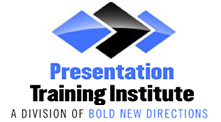Persuasion is powerful and when it’s done well, it can mean a win for you and your audience. A successful persuasive presentation has the power to completely change your career. Whether you’re an entrepreneur trying to convince a group of investors to fund your new business or you’re trying to persuade board members to approve your expansion idea, persuading an audience is easier said than done. With that in mind, here are a few tips for creating a presentation that will persuade any audience to come over to your side.
Know Your Audience
It is important to connect with your audience if you are trying to persuade them. Therefore, you need to do a little research beforehand to find out as much as you can about your audience. Who will be attending the presentation? What are they hoping to learn from you? What are their goals? What motivates them? What values do they care most about? The more you know about your audience, the better you can tailor the presentation to fit their needs. You want to make them feel like the presentation was prepared just for them.
Focus on 1-3 Goals
You may have tons of information that you want to share but too much information can end up confusing your audience. A good persuasive presentation focuses on a handful of things only. Choose a couple of points that you think are the most important and create a presentation that revolves around these goals.
Capture their Attention
The first 30 seconds of any presentation are the most critical. In those first few seconds, listeners are eager to find out what you are going to say. Never waste this precious time intruding yourself and your agenda, but rather start with something that will grab their attention. A great way to do this is by stating your big ideas right up front. Steve Jobs did this perfectly in 2007 when he launched the iphone. He began with these words, “iphone: Apple reinvents the phone.†You can then use this main statement as a hook for an opening story, surprising fact, joke, or personal anecdote that will peak the interest of your listeners.
Acknowledge Obstacles
Think about what challenges your idea will face and what concerns your audience might have. Instead of dismissing them, respectfully acknowledge these points and carefully address how your solution will meet everyone’s goals.
Use Visual Aids to Clarify Your Points
More than ever, audience members expect engaging visual content. Creative visuals that further explain your concept and help you to communicate your ideas. Visual aids such as charts are extremely helpful when showing data. This helps you to make your claims more persuasive and the information more memorable.
Finish Strong
Think of this like an attorney giving their closing remarks. This is your last chance to persuade the audience, so structure your closing in a way that is clear, concise, and memorable. Spend some time creating one final, impactful line and then wait a few seconds before opening the floor to questions.
